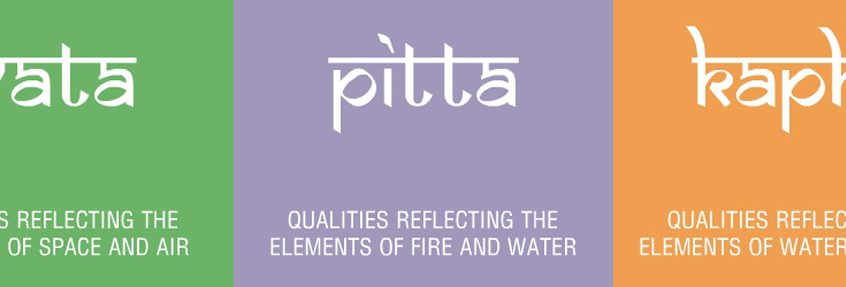There are three Doshas (Humor) in the body. The Dosha literally means anything that makes other things degenerate, and this is what happens when a dosha is not balanced. The balanced state of Dosha reflects the healthy body.
The structural aspect of our body is made up of five elements, but the functional aspect of the body is governed by three biological humors. Ether and air together constitute VATA; fire and water,PITTA; and water and earth, KAPHA. They govern psycho-biological changes in the body and physio-pathological changes too.
-
- Vata is dry, light, cold, mobile, active, clear, astringent, and it is dispersing. Vata season is autumn, time of day is afternoon and early morning. Vata is the impulse principle necessary to mobilize the function of the nervous system. It affects the windy humour, flatulence, gout, rheumatism, etc
-
- Pitta has hot, sharp, light, liquid, sour, oily and spreading qualities. Pitta has a strong smell, like a fleshy smell, and has a sour or bitter taste. Pittais the bilious humour, or that secreted between the stomach and bowels and flowing through the liver and permeating spleen, heart, eyes, and skin; its chief quality is heat. It is the energy principle which uses bile to direct digestion and enhance metabolism.
- kapha has heavy, slow, cool, oily, liquid, dense, thick, static and cloudy qualities. Kapha is sweet and salty. Kaphais the body fluid principle which relates to mucus, lubrication, and the carrier of nutrients.
Subtypes of Tridoshas:
Each Dosha is of five subtypes.
Five Types of Vata…
- Prana Vata – Governs inhalation, perception through the senses and governs the mind. Located in the brain, head, throat, heart and respiratory organs.
- Udana Vata – Governs speech, self expression, effort, enthusiasm, strength and vitality. Located in the navel, lungs and throat.
- Samana Vata – Governs peristaltic movement of the digestive system. Located in the stomach and small intestines.
- Apana Vata – Governs all downward impulses (urination, elimination, menstruation, sexual discharges etc.) Located between the navel and the anus.
- Vyana Vata – Governs circulation, heart rhythm, locomotion. Centred in the heart and permeates through the whole body.
Five Types of Pitta…
- Pachaka Pitta – Governs digestion of food which is broken down into nutrients and waste. Located in the lower stomach and small intestine.
- Ranjaka Pitta – Governs formation of red blood cells. Gives colour to blood and stools. Located in the liver, gallbladder and spleen.
- Alochaka Pitta – Governs visual perception. Located in the eyes.
- Sadhaka Pitta – Governs emotions such as contentment, memory, intelligence and digestion of thoughts. Located in the heart.
- Bharajaka Pitta – Governs lustre and complexion, temperature and pigmentation of the skin. Located in the skin.
Five Types of Kapha…
- Kledaka Kapha – Governs moistening and liquefying of the food in the initial stages of digestion. Located in the upper part of the stomach.
- Avalambhaka Kapha – Governs lubrication of the heart and lungs. Provides strength to the back, chest and heart. Located in the chest, heart and lungs.
- Tarpaka Kapha – Governs calmness, happiness and stability. Nourishment of sense and motor organs. Located in the head, sinuses and cerebrospinal fluid.
- Bodhaka Kapha – Governs perception of taste, lubricating and moistening of food. Located in the tongue, mouth and throat
- Shleshaka Kapha – Governs lubrication of all joints. Located in the joints.

